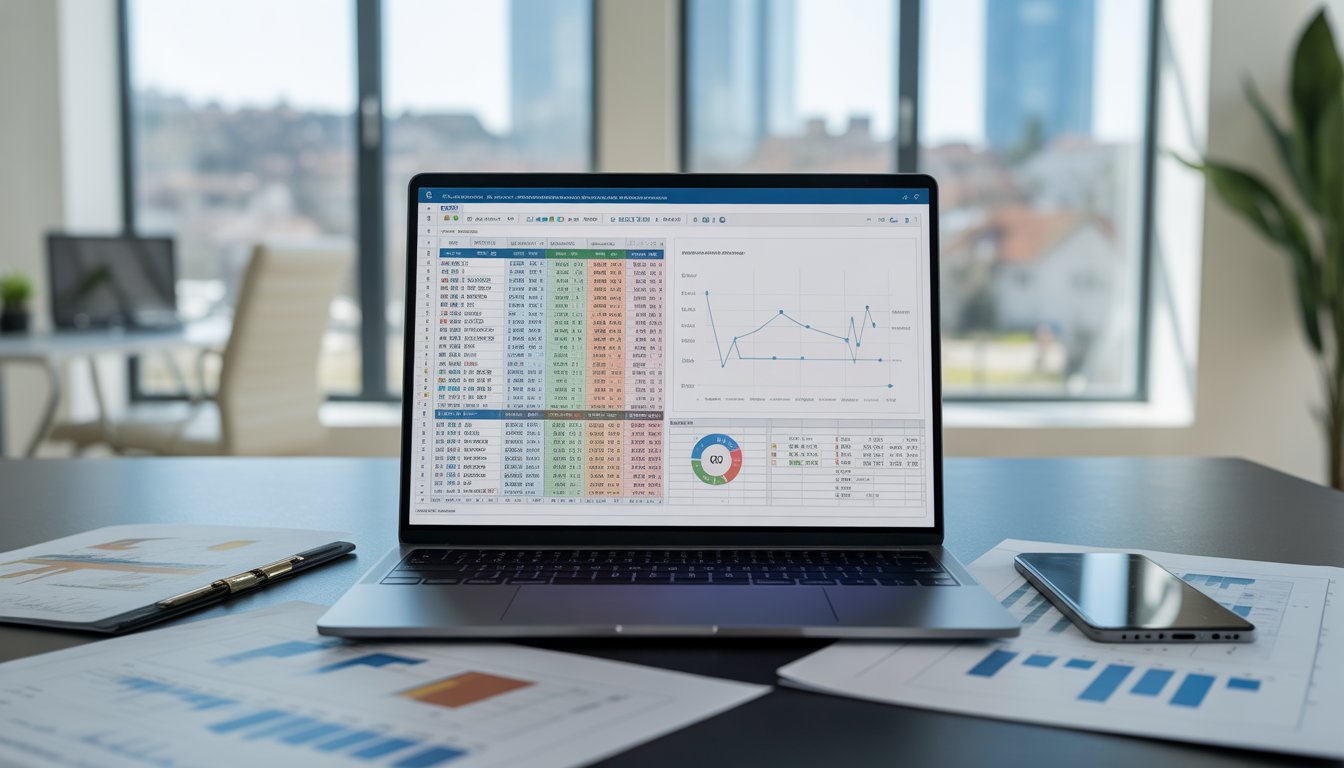Are you itching to become a successful real estate investor? Are you tired of property managers (PMs) who deliver disappointing results?
It’s time for you to gain some control over your investments and monitor your property manager’s performance.
In this post, we’ll show you five financial metrics in real estate investing that could make a difference—get ready to hold your property managers accountable.
Net Operating Income (NOI)
Net Operating Income (NOI) is one of the most critical metrics for real estate investors. It reveals the income generated by a property after operating expenses are deducted. A good NOI is an excellent sign that the property is profitable and generating enough income to cover costs effectively.
- Example: If a property generates $80,000 in yearly rental income and has operating expenses of $40,000, then the NOI is $40,000 ($80,000 – $40,000).
To hold your property manager accountable, track NOI (or cash flow before mortgage-related deductions) over time. You can use the increase in NOI as evidence that the property is profitable and the property manager is working effectively to control expenses and increase income.
Debt-Service Coverage Ratio (DSCR)
DSCR is an essential ratio in real estate financial modeling analysis and investing that helps determine the property’s ability to service debt. It compares the property’s net operating income to its debt service payment. Investors use this ratio to ensure the property generates enough income to cover the mortgage payments.
- Example: If a property’s net operating income is $50,000 and its annual mortgage payments are $25,000, then the DSCR is 2.0 ($50,000/$25,000).
To hold your property manager accountable, compare DSCR with industry averages and the lender’s requirements. This metric can tell you whether your property manager is handling the financing situation competently.
Capitalization Rate (Cap Rate)

The Cap Rate is a metric that measures the rate of return an investor would receive if they bought the property entirely in cash—it’s the ratio between the net operating income (NOI) and the value of the property. This metric is important in real estate investing because it helps determine a property’s value.
- Example: If a property generated $100,000 in NOI and is valued at $1,000,000, then the cap rate is 10% ($100,000 ÷ $1,000,000).
To hold your property manager accountable, compare the cap rate to the industry and sub-markets rates. It can also help you identify over or undervalued properties in the current market.
Gross Rent Multiplier (GRM)
The Gross Rent Multiplier is a simple metric that helps investors assess the rental income of a property relative to its purchase price. It is calculated by dividing the price of a property by its gross rental income and is often used as a quick and dirty evaluation tool.
- Example: If a property is being sold for $500,000 and has an annual gross rental income of $60,000, then the GRM is 8.3 ($500,000/$60,000).
To hold your property manager accountable, track GRM over time to evaluate whether the property’s value is increasing or decreasing. If you’re looking for an additional investment, a low GRM indicates that the property is undervalued, which could mean the seller is motivated to sell at a lower price.
Break-Even Ratio
The Break-Even Ratio is a metric that shows how much vacancy a property can afford before it starts losing money. It considers the operating expenses and debt service. Investors use this metric to determine a property’s profitability potential.
- Example: If a property generates $12,000 in monthly rental income, and the total monthly operating expenses and mortgage are $10,000, then the Break-Even Ratio is 83.3% ($10,000/$12,000).
To hold your property manager accountable, ensure that the Break-Even Ratio is not more than a certain percentage. Analyzing your property manager’s past management and researching what’s expected in your market are crucial when evaluating this metric.
Closing Thoughts

Monitoring financial metrics is a critical component of real estate investing.
These metrics help you hold your property managers accountable, spot potential issues, build an emergency fund, and evaluate a property’s financial performance.
Use data to review the metrics with your property manager monthly or quarterly, making adjustments where necessary. Consider using the Rule of 72 to track just how well your PM is performing and internal rate of return to help predict the success of your real estate investments.
The more you do this, the better you will become at investing and the more successful you’ll be in keeping your property managers accountable.
Tired of Second-Guessing Your Investment Numbers?
Learn how to find profitable real estate deals. Get instant access to professional-grade property analysis tools and start evaluating properties in minutes!

Dive deep into the world of real estate investment with this comprehensive case study that brings theory to life.
Investment Real Estate Analysis: A Case Study offers an unparalleled look at the decision-making process behind successful property investments. Follow along as we dissect a real-world scenario, revealing the critical factors that seasoned investors consider before making a move.
From crunching numbers to assessing market conditions, this book walks you through every step of the analysis process. Learn how to evaluate potential investments like a pro, understanding key metrics such as cap rates, cash-on-cash returns, and internal rate of return.
Whether you’re a novice investor or looking to refine your skills, this case study will equip you with the tools to make informed investment decisions in the competitive real estate market.
Get your copy now from your favorite bookseller:
- Amazon
- Books2Read for Apple, Barnes & Noble, Kobo, Scribed, and 8 more sellers with both eBook and paperback options available
- Payhip as a downloadable PDF
Ready to take your business to the next level?
- Subscribe to our newsletter
- Visit the learning center
- Learn more about our consulting services



